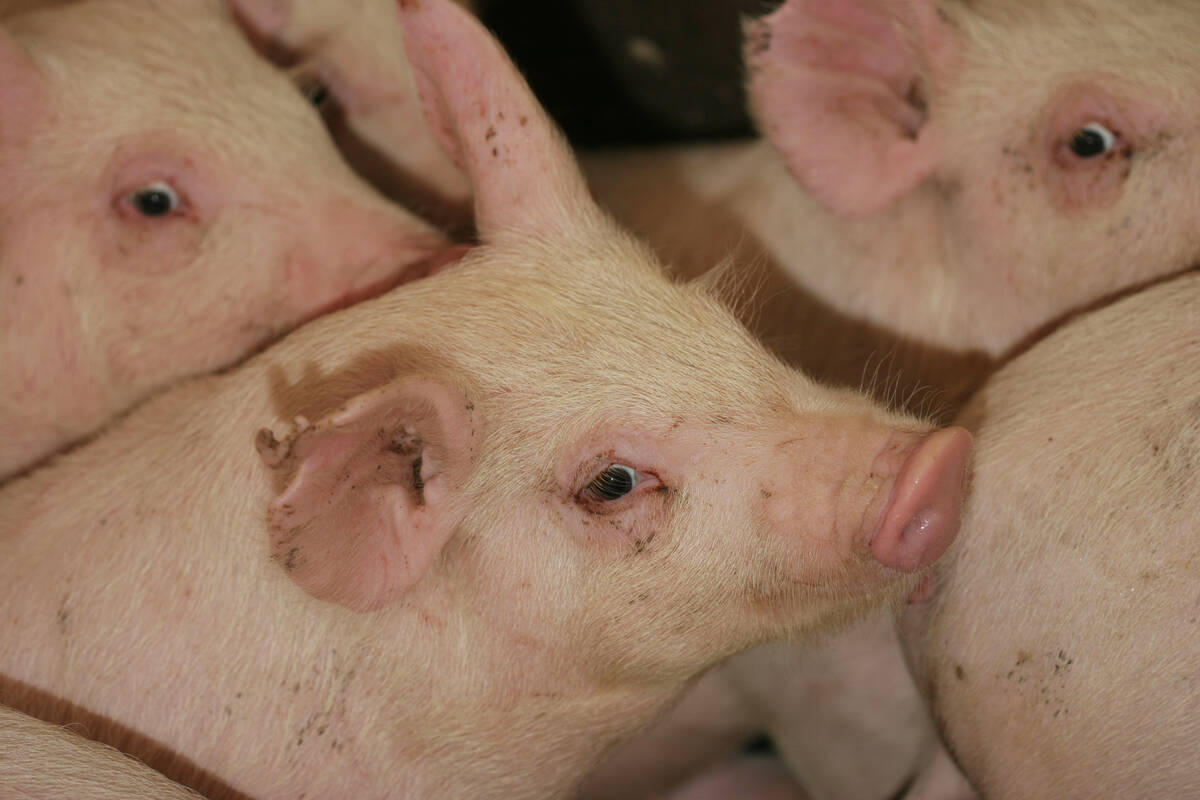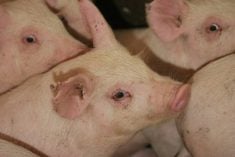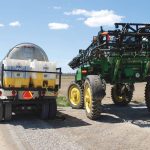RED DEER – The pressure to stop using stalls for gestating sows has prompted researchers to assess the merits of open housing.
“As we move into alternative systems, animal based measures are going to be critical for monitoring the welfare of the sows,” said Tina Widowski, head of animal welfare studies at the University of Guelph.
Widowski said the university recently renovated its barns and switched over to open area housing for 350 sows. It had been using gestation crates since the early 1970s.
New floors were poured, stalls and alleys were removed to give the sows more space and some open stalls were made available for sleep and relaxation.
Read Also

The Western Producer Livestock Report – September 25, 2025
The U.S. national live price average for barrows and gilts was $81.21 Sept. 17. It was $78.37 Sept. 9. U.S. hogs averaged $106.71 on a carcass basis Sept. 17, up from $106.10 Sept. 9.
Sows were measured before and after they entered the new premises.
The sows entered at about 35 days of pregnancy. They stayed together until the end of their gestation.
Each sow was allotted 35 sq. feet of space, but researchers also looked at other variations in barn size ranging from 25 to 30 sq. feet per animal.
“We looked at small versus large so there were a variety of situations,” she said.
There were six sows per nipple drinker and the animals were fed on the floor. The air temperature was kept constant and there were sprinklers available for summertime showers.
Overall production was not reduced and they found more piglets were born alive per litter in loose housing situations. Mortalities, culls and euthanasia losses were all less than one percent among the sows in the program.
“We have to remember this is a research station so we are regularly inspected by our animal care committee so the standards are going to be very high and this is reflected very much in our performance,” she said.
Researchers also looked at body condition score, fighting, biting and competition. Special note was taken of shoulder scratches, which are an indicator of fighting to establish dominance.
The more aggressive sows tended to have shoulder scratches while those being bullied had scrapes along the flanks because they were trying to get away.
Most fighting occurred when the sows first arrived after being mixed with the group, but aggression went down over time. There was regular fighting around the feeding area.
Researchers also noticed fighting and injuries seemed to depend on the chemistry of the group so as producers move into different systems, monitoring and management will be important.















